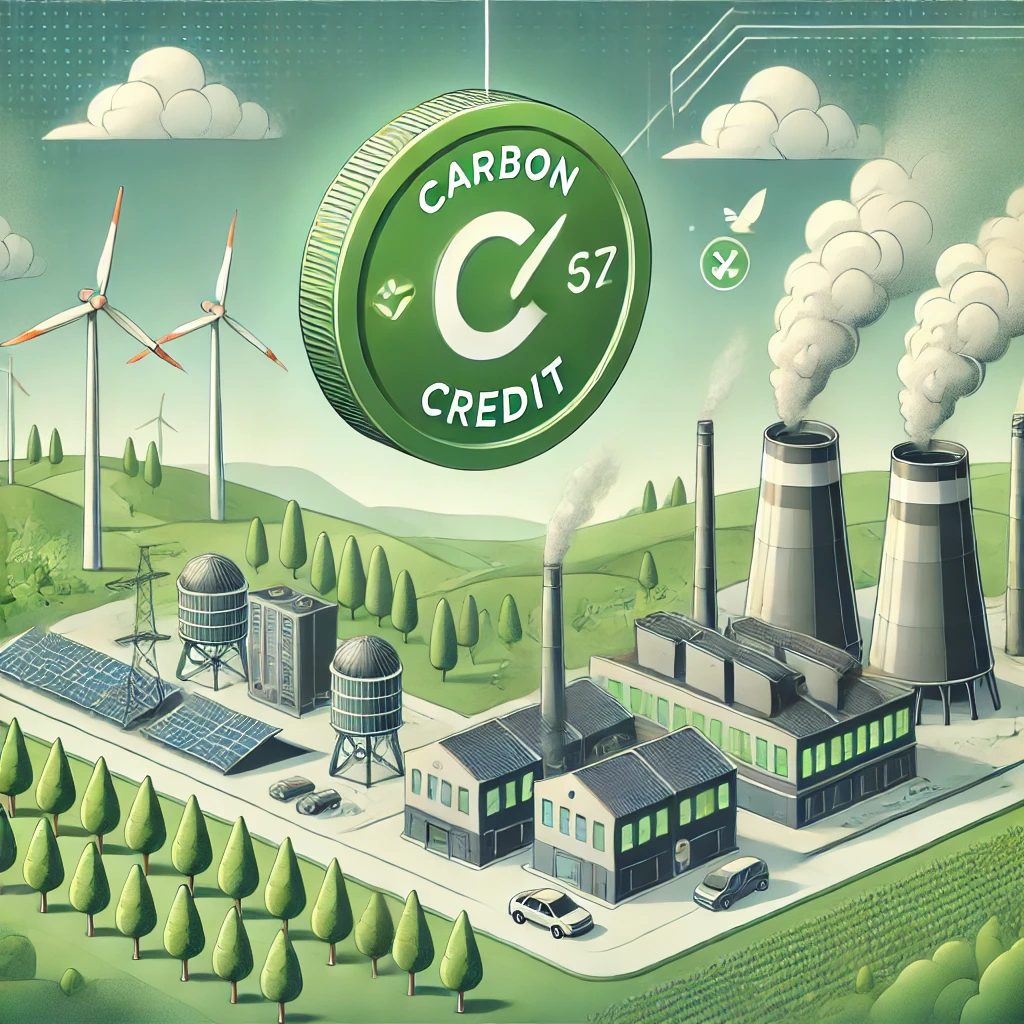The Mechanics of Carbon Credits: Five Pathways to Earning
Whether you’re a forest grower, renewable-energy pioneer, or farmer, earning carbon credits isn’t just about selling offsets—it’s about navigating five strategic pathways—from protecting existing ecosystems and growing new carbon sinks, to innovating in energy, agriculture, and industry. Master these mechanisms—or risk watching millions slip through the cracks.

The concept of carbon credits, while seemingly abstract, has become a crucial mechanism in the global effort to combat climate change. Behind the complex market structures and policy frameworks lies a truth: reduce emissions, and you get credit. But the reality of earning these credits is far from simple. It is a carefully managed process, requiring precise calculations, independent verification, and an unwavering commitment to reducing greenhouse gases.
Carbon credits represent one metric ton of carbon dioxide or its equivalent in other greenhouse gases, avoided or removed from the atmosphere. These credits can be bought and sold, allowing businesses to offset their emissions, often in sectors far removed from the project’s origins. But how exactly are these credits earned? Here are five types of projects that offer a clear path to securing these valuable assets.
1. Forestry and Land Use Projects
Forests, often overlooked in policy rooms, are nature’s most efficient carbon sinks. Here, two types of projects stand out: reforestation and afforestation.
In reforestation projects, trees are planted in areas where forests once stood, often after being cut down for agriculture or logging. The goal is simple—restore the landscape and sequester carbon. Afforestation, on the other hand, takes place in areas that were never forested to begin with. Both methods carry a dual benefit: they absorb carbon dioxide and contribute to biodiversity.
Then there’s REDD+, a framework aimed at reducing emissions from deforestation and degradation. These projects are aimed not just at planting, but protecting. In nations like Brazil and Indonesia, where deforestation is rampant, REDD+ can be a lifeline for both the planet and local economies. Projects are designed to maintain forested land and, crucially, prevent its destruction. Carbon credits are awarded based on the amount of forest and carbon they save.
2. Renewable Energy Projects
The renewable energy sector has been a bedrock of carbon credit markets for years, and for good reason. These projects directly displace fossil fuels, arguably the largest contributor to global greenhouse gas emissions.
The technologies are familiar: solar, wind, hydro, and bioenergy. Solar power projects, such as sprawling panel farms in desert regions or urban rooftops, convert sunlight into electricity. Wind turbines spin, capturing kinetic energy. In places like Texas and Iowa, wind energy projects have scaled rapidly, displacing coal and gas.
Bioenergy uses organic materials—often waste from agriculture or forestry—to produce electricity. These projects provide an added benefit: by using waste, they eliminate emissions that would otherwise come from decaying organic matter, especially methane, which is a far more potent greenhouse gas than carbon dioxide.
3. Waste Management Projects
In landfills across the globe, methane rises invisibly into the air, a silent contributor to climate change. Methane capture projects aim to stop this. By trapping methane gas before it escapes, these projects turn a liability into an asset. Captured methane can then be burned to generate electricity—cutting both emissions and energy costs.
Waste-to-energy projects are part of the same family. Here, waste materials that would otherwise sit in landfills are converted into fuel, reducing the amount of methane emitted and providing a renewable energy source. Recycling and composting efforts also contribute by reducing the overall waste sent to landfills. In cities like San Francisco, mandatory composting and recycling programs are doing just that, earning carbon credits in the process.
4. Energy Efficiency Projects
The lowest-hanging fruit in the carbon credit market often lies in energy efficiency. The principle is simple: use less energy, emit fewer greenhouse gases.
Building retrofits are one common approach. Older buildings, which are often poorly insulated, consume massive amounts of energy for heating and cooling. By upgrading insulation, replacing outdated windows, and installing energy-efficient lighting, building owners can reduce their energy consumption significantly. The result? Lower emissions and earned carbon credits.
Similarly, industries have turned to process improvements. In manufacturing, small changes—optimizing heat recovery, upgrading equipment, or simply using more efficient motors—can lead to substantial reductions in energy use.
5. Agricultural and Livestock Management Projects
Perhaps one of the more challenging sectors to regulate, agriculture and livestock management offer tremendous potential for emissions reduction. Conservation agriculture, which includes practices like reduced tillage and crop rotation, can significantly increase soil carbon sequestration, removing carbon dioxide from the atmosphere and storing it in the soil.
Meanwhile, livestock management offers an overlooked but critical opportunity. Livestock, particularly cattle, are major methane emitters due to enteric fermentation. By adjusting feed types or improving manure management, farmers can reduce methane emissions and earn credits in the process.
In rural parts of Kenya, programs are underway to introduce feed supplements that reduce methane emissions from cattle. The results, while incremental, have global significance. Each ton of reduced methane is far more impactful than the equivalent reduction in carbon dioxide.
The Larger Picture: Verification and Standards
No project, however well-intentioned, earns carbon credits without verification. The credits themselves must be validated against rigorous standards like the Verified Carbon Standard (VCS) or the Gold Standard. Independent auditors measure the actual emission reductions or sequestration, ensuring that each project delivers real, quantifiable, and additional benefits.
The process is meticulous and complex, involving years of monitoring and adjustment. But for enterprises willing to invest the time and resources, the payoff is clear: a financial return through the sale of credits, a cleaner atmosphere, and a step toward a more sustainable world.
Babalik, A. A., & Pamukoğlu, Y. (2023). An Assessment of Climate Change and Carbon Management retrieved from
https://www.researchgate.net/climate/carbon-management
Climate promise UNDP ;
https://climatepromise.undp.org/importance-of-carbon-markets
